How to make a do-it-yourself berry harvester?
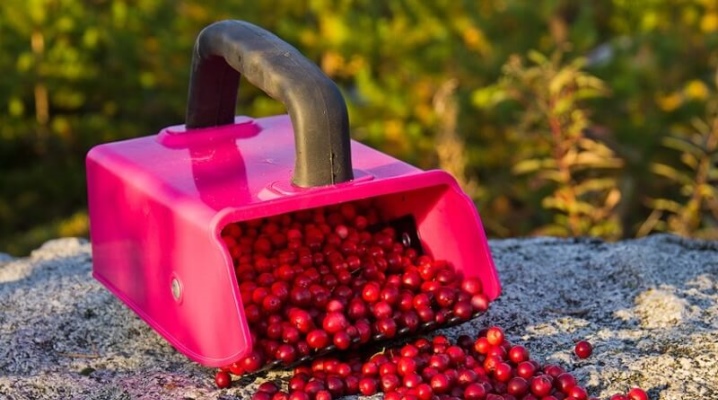
Gardeners who love growing a variety of berries want to make harvesting easier and more sophisticated. For this, various devices are often used, which are called combines or berry collectors. They make picking small berries a simple and enjoyable experience. As a result, instead of 30-40 minutes, you can complete the task in 5-15 minutes. There are a huge variety of combines, and many of them can be made yourself from simple materials.
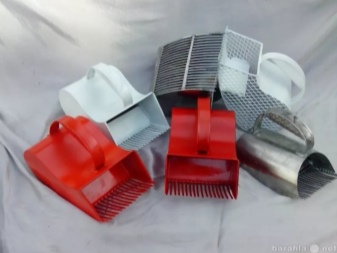
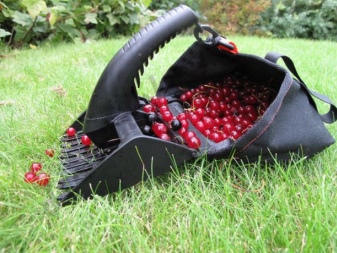
What is a berry collector?
Such a harvester is a device that improves the collection of berries in large volumes. Such devices have different techniques of use, structure, level of mechanization. The most important thing is that the harvester removes the crop from the branches with minimal damage, or better without them at all. Most often, berry collectors are used when collecting gooseberries, lingonberries, blueberries, cloudberries, cranberries, currants and other berries.
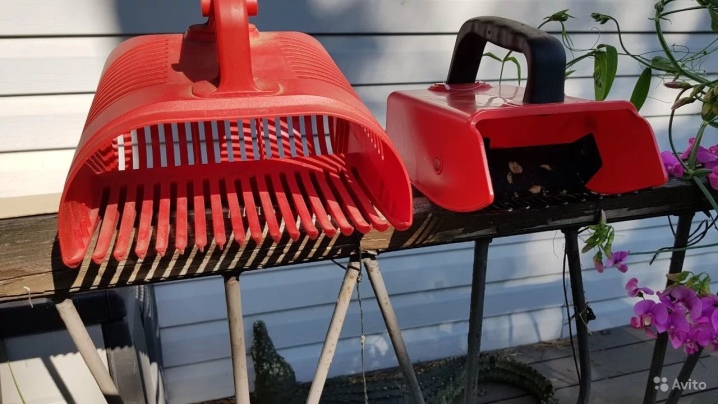
The simplest device is a scraper. It consists of a comb, a container where the berries will be poured, and a handle. The shapes of the berry collector can be very diverse: in the form of a rectangle, a circle, an oval. The containers can be soft or hard. Using such a unit is simple. It is enough to hold it by the handle with one hand, and with the other to direct the branches with berries towards the ridge. The principle of using any combine is the same: when it moves, the shoots slip between the teeth.
The diameter of the gaps at the ridge should be less than the diameter of the berry so that it cannot slip.
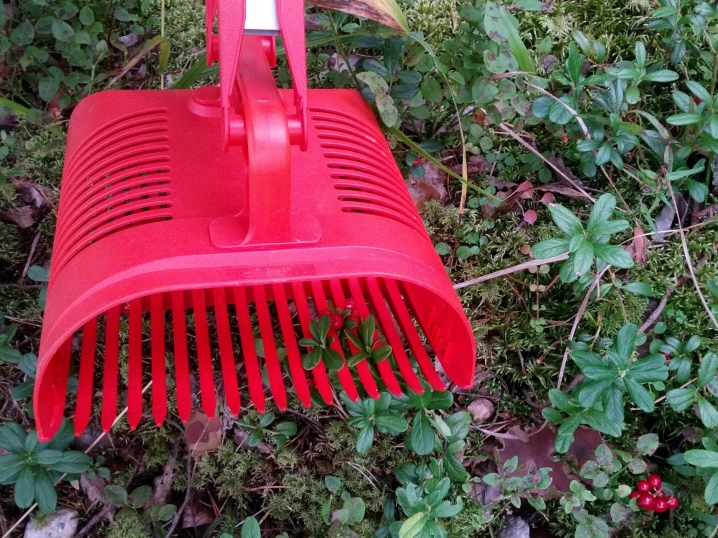
There are several main types of combines.
Manual without mechanization, which was made according to prototypes of devices created by our distant ancestors. The appearance of such a collector resembles a rake with a handle and a container. Of course, today they have acquired a very comfortable shape and are distinguished by ergonomic handles. Many models for grabbing branches have special fence made of wire or sheets.
Manual with mechanization. Their design provides for a motor that allows, due to rapid forward movements, to crush the crop directly from the branch into the container. There are also interesting options with vacuum suction.
Automatic, operated by the operator. Such a combine looks like a huge grain harvesting machine. However, instead of mowing elements, they have special ones for picking berries without damage.
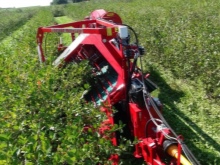
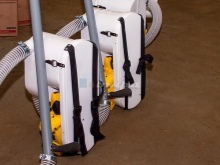

Of course, most gardeners prefer a homemade combine harvester... Moreover, when choosing which one to buy or make, it is worth deciding on which berries the unit is needed for. For example, blueberries, currants and gooseberries are harder, and models with a rake-type removal element are suitable for them, while soft, fragile strawberries and raspberries are best harvested with tools that crush the berries into a container.
The Finnish berry collector is recognized as one of the most successful hand models.
This device does not damage bushes and is recognized as safe from an environmental point of view. Its main part is a plastic container that resembles a closed scoop. The handle is comfortable, with a rubberized grip. The cutter is made of metal and the spokes are specially protected.
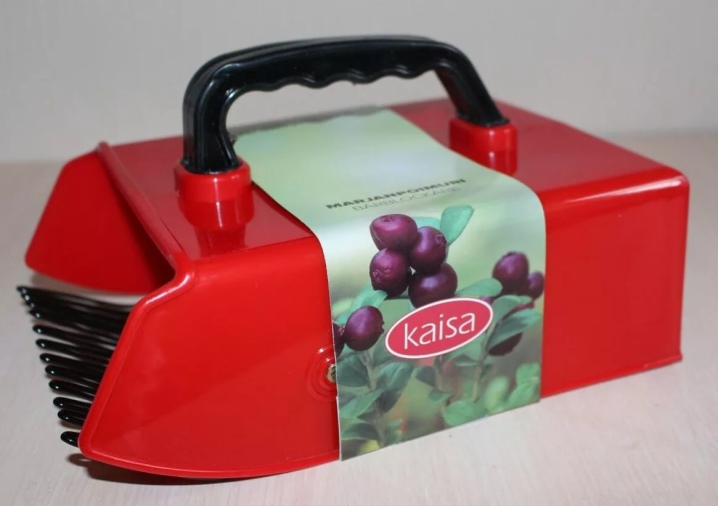
It is worth noting that in such a combine, the knitting needles can be with balls at the ends or bent like pins. It is with the knitting needles that the branches with the fruits are pushed off, and then the cutter tears them off from the base, and they fall into the container for berries.
It is important that the collector is free of sharp cutting edges so as not to damage the plant stems and leaves.
This also applies to the teeth themselves. It is especially important to provide for this in homemade models. If the bushes are injured when picking berries, then the next year they will have less harvest.
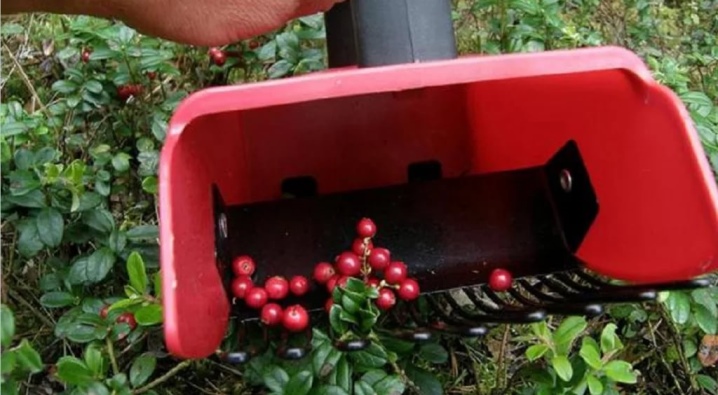
Required materials and tools
For making the simplest do-it-yourself collecting device first, you should prepare a number of materials and tools.
Durable plastic bottle. The simplest option is a plastic mineral water bottle, but it is not strong or durable. It is better to opt for options from ketchup or milk, kefir. Such containers are small in size and at the same time rather wide, which is convenient when shaking out berries.
Sharp knife. You can use both ordinary kitchen and office supplies.
Stick. Its length should be convenient for picking berries from the bush.
Rope or tape for fastening parts of the combine.
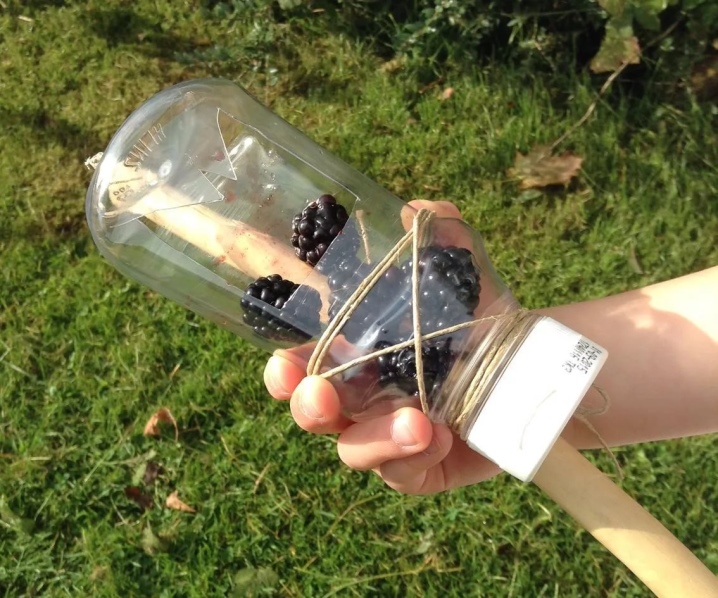
You can also make a berry collector from metal. This will require slightly different working tools.
Steel sheets. It is desirable that they are new and not damaged. They are used to make the body of the combine, and sometimes the container itself.
Metal wire must be strong and not bend when in contact with branches or the ground. She will go to the manufacture of a comb, which is responsible for plucking the crop from the bush. In this case, it is advisable to choose the length of the pins in the range from 10 to 15 cm.
Bolts, nails, screws or other fasteners.
Scissors for metal. They will allow you to quickly and accurately cut the sheet into the necessary parts.
Plywood or plastic sheets will be needed for the hull plating. This is to avoid damaging the berries during picking. You can also use cans, plastic bottles or their trimmings for this.
Drill will allow you to make holes for fasteners with minimal effort.
Hammer. Especially indispensable when sheathing a container with plywood.
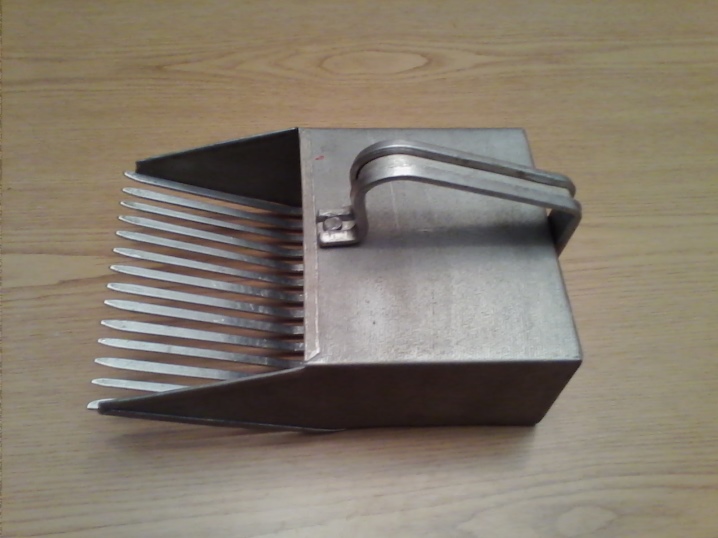
Also, often berry harvesters can be made of plywood. In this case, you will need everything the same as when creating a metal combine. Only the basis will not be steel, but a plywood sheet.
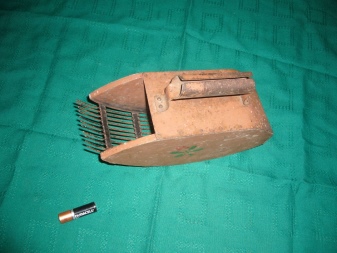
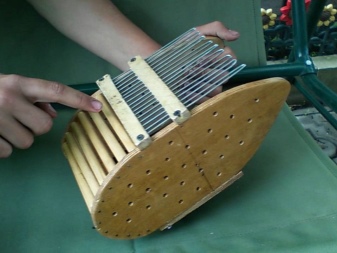
There is another version of a very simple combine, for which you will need the following materials and tools:
wooden skewers for kebabs are perfect for a comb;
tree branches with a diameter of 10 cm or more are taken as a basis;
the saw will allow you to separate the circles of the desired size from the branches;
holes will be made with a drill and a drill;
a chisel is useful for giving the tree an optimal shape;
glue will make it possible to quickly and easily fasten the entire structure.

Drawings and dimensions
For blueberries, gooseberries, cranberries and lingonberries, the simplest dipper with a depression is suitable. A comb with teeth 10-15 mm long, which are 4-5 mm apart from each other, is attached to it in front of it. The bucket is equipped with a handle at the back for more convenient operation. The berries are easily plucked from the bush and rolled into a container, and then they can be poured into a bucket or other container.
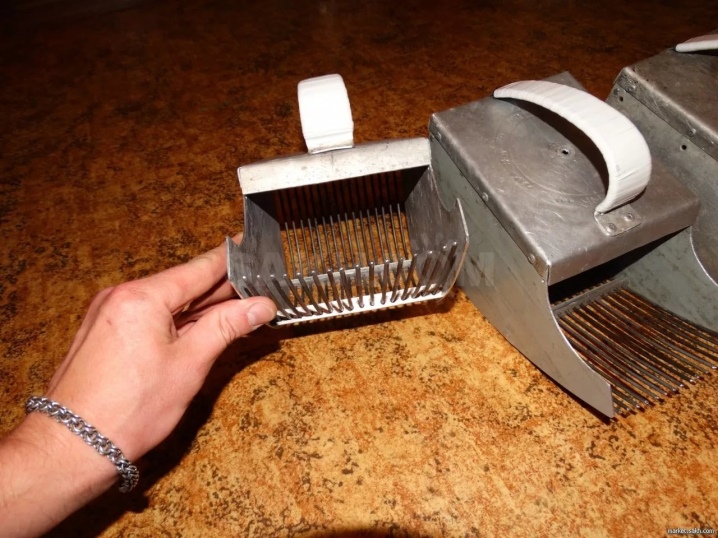
The parameters of such a berry collector will be as follows:
base in the form of a rectangle with sides of 72 and 114 cm;
sidewalls that are U-shaped according to the drawing below;
comb teeth 2 mm thick and 10 mm long;
the distance between the teeth is 5 mm.
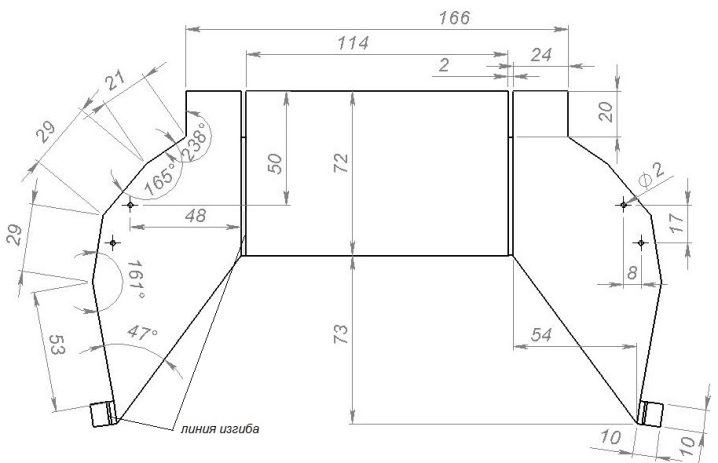
Figure 1. Drawing of a metal berry collector
It is worth noting that this model is completely unsuitable for strawberries and currants from a bush.
This is due to the fact that they have too large leaves that do not pass well between the teeth of the comb. It is recommended to collect strawberries on a large scale with commercial berry collectors-vacuum cleaners, which cause minimal damage to the delicate trunks and whiskers of the plant.

Manufacturing instruction
Making your own berry collector is very simple. The simplest option is a glass from a bottle.
First, a place is marked on the bottle where the hole will be located.
Next, the stick is fixed to the tool so that its end reaches the bottom of the plastic container, and protrudes outward with the other edge.
According to the mark made earlier, a hole is made in the shape of a square.
Large teeth should be cut from the bottom side.
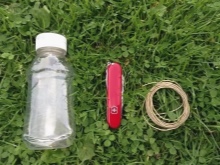
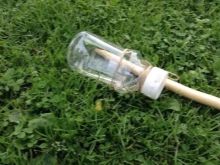

You can also make a manual berry harvester from metal.
First, a paper pattern of parts is made according to the drawings. The only exception is wire elements.
Then the bottom of the tool, as well as the body, must be cut out of the steel sheet.
A cutter is made from a separate sheet of steel. To do this, you need to measure the width, which is equal to the width of the receiver for berries, and then bend one edge of the steel.
On one side of the resulting cutter, holes are made with a diameter equal to the diameter of the wire. The distance between them should be 4–5 mm.
Now you need to cut the wire into pieces 10 cm long and insert into the resulting holes. Then they are fixed either by welding, or simply bent with a hammer. There is also an option to fix it with a wooden lath.
The ends of the rake, obtained in this way from the wire, must be bent until the side is formed. This will keep the berries from rolling.
The body can now be assembled using the pre-selected fasteners.
Next, screw the resulting comb to the body.
If desired, the tool body is additionally sheathed with wood or plastic. Such a measure improves safety during work and at the same time protects bushes from unwanted damage.
The handle is made from a steel tube or a narrow plate. You can also use ready-made handles, for example, from an old door or from a construction trowel. It is fastened by welding to the top of the body or by bolts, for which the holes are drilled in advance. You can make the handle less slippery by wrapping a layer of electrical tape around it.
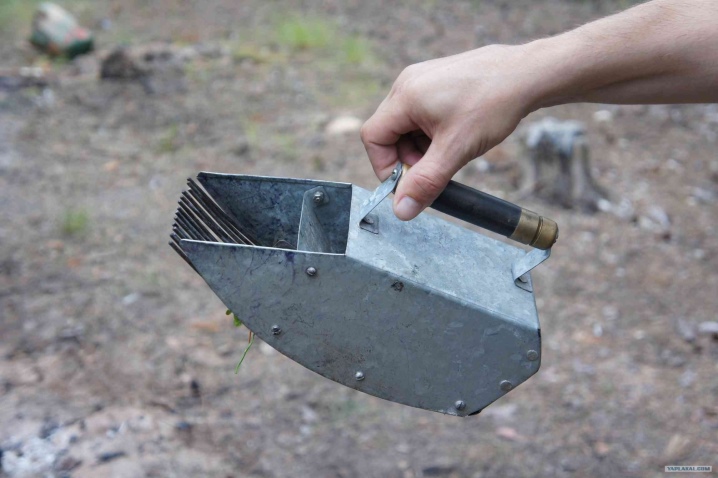
It is not difficult to make another version of the berry collector.
For him, you must first make a pair of identical round branches.
Next, on one of the resulting wooden circles, you need to make a hole using a chisel. It is done with an indent from the edge of one centimeter.
Then sanding is carried out to remove the burrs.
Now the comb is being made. To do this, you need to drill holes in the circle with a circle equal to the diameter of the kebab skewers. The distance between them should be about 5 mm.
Similar holes are made on the second circle.
Next, both circles are placed one on top of the other so that all the holes coincide. Kebab skewers are inserted, and the circles are retracted along them at a distance of 15 cm.
After that, the frame can be fixed with glue.
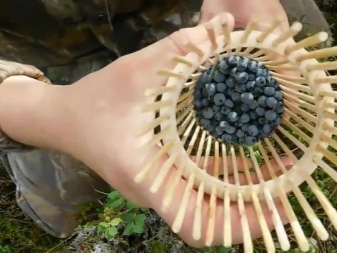
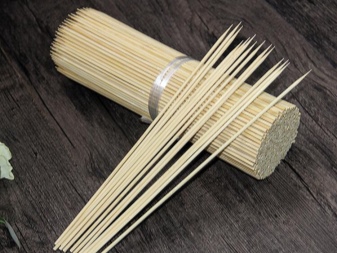
There are a large number of options for making a berry collector. As you can see from the instructions above, making the right tool with your own hands is quick and easy.
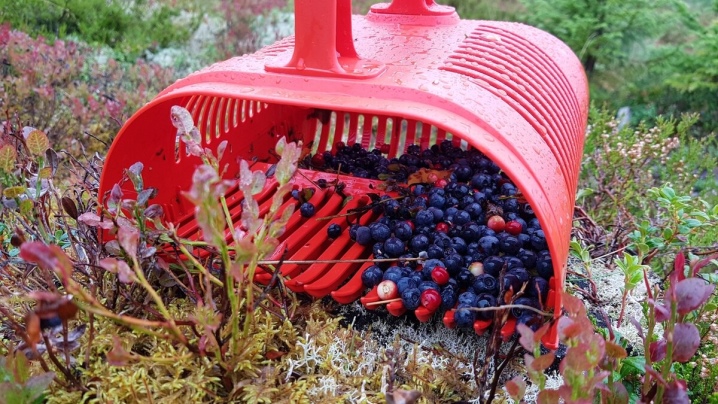
The next video shows one of the options for making a berry collector with your own hands.































































The comment was sent successfully.